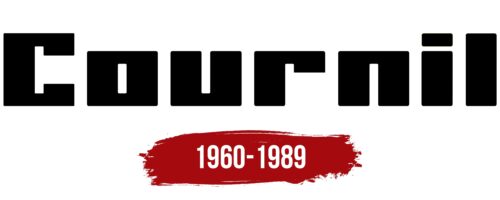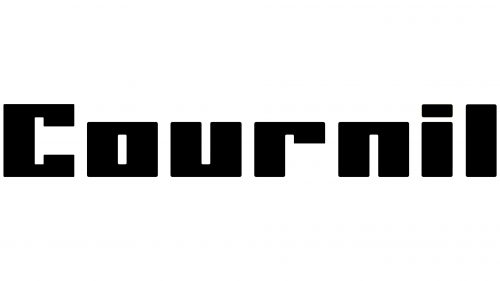The Cournil logo is powerful and heavyweight, like a truck. Each letter demonstrates the vehicles’ increased stability and off-road capability. The elements convey readiness for tough, dirty work and reliability.
Cournil: Brand overview
In the 1950s of the last century, the Cournil company appeared in France. It was a manufacturer of off-road vehicles founded by the pioneering engineer Bernard Cournil. He began by modifying existing vehicles into rugged and adaptable trucks suitable for the demanding conditions of farms and work sites.
In the latter part of that decade, Cournil expanded his vision and began manufacturing his line of all-terrain vehicles in Orillac, France. These vehicles, produced under the Cournil brand name, had four-wheel drive and were available in various configurations, such as pickup trucks. They were designed for various applications, from agricultural and military to recreational.
Bernard Curnil’s retirement from the business in the 1960s did not mean the company’s end. Instead, manufacturing licenses were granted to other firms in France and Portugal, ensuring the Cournil legacy continued. In the following decades, several Cournil models retained the distinctive rugged and individual design traits that defined the brand.
The journey of Cournil cars continued until 1989, when Auverland, the last licensee, decided to discontinue production. This ended over three decades of Cournil’s existence in the automotive industry. During its heyday, the company could produce hundreds of these unique trucks annually, supplying markets in Europe, Africa, and other regions.
Despite the discontinuation of Cournil trucks, their influence and appeal have not waned. Even decades after the last vehicle rolled off the assembly line, enthusiasts and off-road enthusiasts revere the Cournil as a symbol of customizability and excellence. These iconic SUVs inspire loyal fans, reflecting their creator’s unwavering vision and innovation.
Meaning and History
What is Cournil?
It is a French automaker known for rugged off-road vehicles. The company specializes in building rugged four-wheel drive vehicles for agricultural, industrial, and military use. The vehicles were recognized for their ruggedness, reliability, and ability to tackle tough terrains. Over time, the brand became part of the Portuguese company UMM (União Metalo-Mecânica), which continued to produce vehicles based on Cournil’s designs.
1960 – 1989
The Cournil logo, representing the French car brand named after Bernard Cournil, is a striking text-only design. It features large, bold letters that fill the space, creating a powerful presence. The square-shaped letters, including “c,” “o,” “u,” “r,” and “n,” along with the rectangular “i” and “l,” maintain geometric consistency.
The inner spaces of the letters appear as thin slits, but the generous spacing ensures each glyph stands out clearly. This design makes the brand name easy to read. The font is uppercase and solid black, adding to the logo’s bold look.
The large, square letters suggest strength and toughness, matching the rugged nature of Cournil Jeeps. The all-black color scheme gives a businesslike appearance, implying durability and reliability. This simple yet powerful design enhances the logo’s visibility and memorability.
The wide spacing between the letters allows each one to stand out, ensuring readability. The lack of decorative elements reinforces the logo’s utilitarian vibe, reflecting the brand’s focus on functionality and performance.
Overall, the Cournil logo represents the brand’s identity well. The large, bold letters communicate strength and resilience, while the simple black color and geometric shapes convey professionalism and reliability. This design makes the logo instantly recognizable and memorable.





